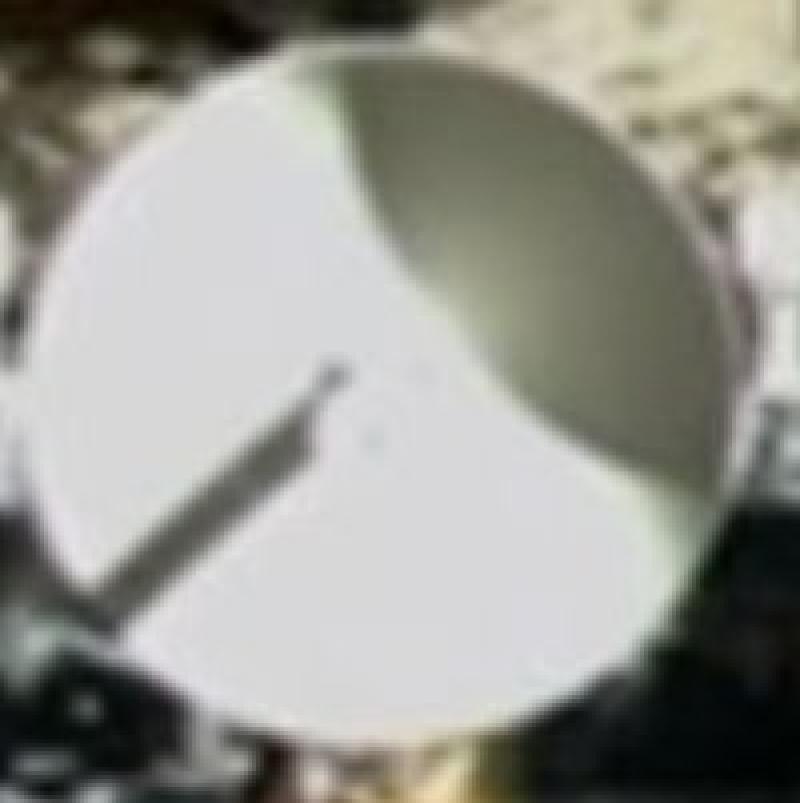China’s Chang’E-4 may have landed near pieces of the Moon’s interior




One of the consequences of this is that the early Moon spent a lot of its history being bombarded by this debris, a process that should have left its surface molten. This magma ocean would only solidify slowly as the bombardment wound down, and the process of solidification should have left a mark on the Moon's composition. So far, indications of this have been difficult to come by. But now, there are signals that the Chang’E-4 mission to the Moon's far side has finally spotted some of the Moon's mantle, which contains signs of its magma ocean.
The end of an ocean
At first glance, the end of a magma ocean might seem simple: molten rock solidifies, leaving behind a solid body. But different minerals have their own melting points and densities, which can cause the ocean to become stratified. Ultimately, it's thought that the densest minerals will solidify at the base of the ocean, while the crust would be formed from lighter material that could solidify while floating on top of the remaining magma. Thus, we'd expect to see certain minerals on the surface and a different group of minerals deep in the mantle.
Confirming this, however, requires us to sample the mantle, something that's not entirely simple to do. Most of what we know about the mantle comes from seismic experiments set up during the Apollo missions. None of the rocks brought back, however, seem to have originated in the mantle, largely because plate tectonics doesn't exist on the Moon, so that process can't bring mantle material to the surface.
One alternative process that could bring mantle material to the surface is an impact. This idea got a boost when the GRAIL mission mapped the lunar crust and found it was thinner than previously thought. But it's not clear how effectively an impact would excavate the mantle. Simulations suggested that a large impact would leave a pool of molten rock behind, in which the same process of stratification could occur. In other words, the same dense minerals might end up condensing deep underneath the crater rather than some place where we could examine them.
Still, if there's any place the mantle might have been excavated, the best candidate is the South Pole's Aitken Basin, the largest impact crater on the Moon with a diameter of roughly 2,500 kilometers (~1,553 miles). And imaging from orbit suggests that the basin is higher in iron content than other areas of the surface, which would be consistent with it containing mantle material. There's just one problem: the Aitken Basin is on the far side of the Moon, leaving it outside the area where we can easily control a lander.
Feeling that the scientific case for exploring the Aitken Basin was sufficiently strong, China decided to change that by putting the QueQiao relay satellite in orbit where it could enable exploration of the Moon's far side. This was followed by the Chang’E-4 lander and Yutu-2 rover, which were landed in the Von Kármán crater, a smaller (185km in diameter) crater on the floor of the Aitken Basin. Yutu-2 carried a near-infrared spectrometer, allowing it to determine the composition of rocks in the area.
Maybe some mantle
It would be nice to think that we could point a spectrometer at a rock and have a list of minerals present pop out. The problem is that most rocks aren't composed of a single mineral. As a result, you get a complicated spectrum that includes peaks from multiple materials, making them difficult to interpret. What is obvious is that the spectrum looks nothing like the ones gathered by the lander's predecessor Chang’E-3.
To figure out what might be going on, the researchers built a model that allowed them to mix minerals that were known to be present in the Moon's crust, along with some that are expected to reside deep in the mantle. The model could vary the fraction of these materials present and then predict the spectrum it produced when reflecting sunlight.
The results they obtained from the model suggest that roughly half the sample was composed of pyroxene. Critically, most of this mineral appears to be low in calcium, which makes for a denser material and is expected to be present in the mantle. In addition, the model indicated that nearly half the sample consisted of olivine, a dense material that's also expected to be found deep in the mantle. While this shouldn't be viewed as definitive evidence of the presence of these minerals, the Chinese researchers mention that China's space program is preparing for sample returns, so Yutu-2 can be seen as laying the groundwork for that.
It's notable that these minerals show up in rocks rather than in the soils of the area. If the whole impact basin included material from either of the two impacts (the ones that formed the Aitken Basin and the Von Kármán Crater), then you might expect some of that material to contribute to the regolith on the surface of the Moon there. But the researchers suggest the rocks may have originated somewhere else entirely.
The Aitken basin contains multiple impacts, and one of these—the Finsen Crater—produced rays of ejected material, two of which travel through the Von Kármán crater. It turns out that the Change'E-4's landing site (called Statio Tianhe) is right where one of those rays transits the crater floor. Thus, the researchers suggest that the Finsen impact is what blasted mantle material loose, allowing Yutu-2 to find it there.



I love this stuff...
Excellent article as usual Bob.
Thank you.